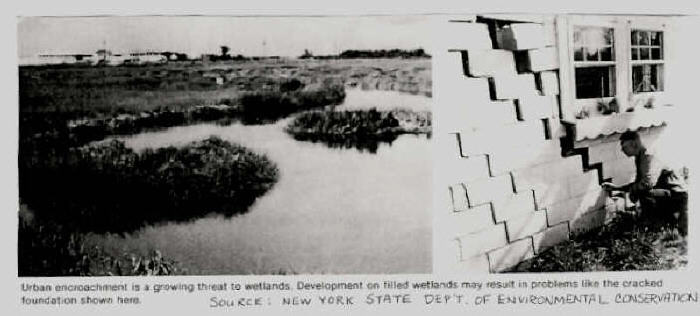
Building a home in a wetland or in hydric (clay-like) soils can come back to BITE you and possibly your developer...

 Read the sad tale of Homes Built in Wetland Soils in Amherst, NY
Read the sad tale of Homes Built in Wetland Soils in Amherst, NY Read about Homes Built in the Klydel Wetland in North Tonawanda, NY
Read about Homes Built in the Klydel Wetland in North Tonawanda, NY




If you know someone who is thinking of building or filling in what appears to be a wetland, write us a note at the e-mail address below. We'll point them to some helpful web sites. Seasonal wetlands, i.e., the Klydel Wetland, are only wet part of the year (normally through Spring) and may not appear to be wetlands at all in the summer. They still are wetlands, though, so don't be fooled by that dry summer appearance when selecting a site to develop or fill. And don't let a bad decision come back to BITE you!

The web site (below) will produce National Wetland Inventory maps for most zip codes or communities. These maps show where some wetlands are located but NOT all wetlands. Also, the wetland may be bigger or smaller than mapped. To be certain of the size and location the actual site on the ground must be checked by both state and federal regulators. In addition, it is a good idea to review wetland permit applications for areas of interest to see what wetlands have been "written off" by regulatory agencies as so-called "isolated wetlands". These isolated wetlands are still quite capable of damaging home foundations built in them and causing flooding situations whether the government wants to protect the wetlands or not. Regulators almost always grant permits to developers to build in wetlands but developers don't have to divulge to prospective home buyers that a wetland permit was required to construct a residence in a wetland. It is totally buyer beware!!!

 Photos of students in the Klydel Wetland.
Photos of students in the Klydel Wetland.
� 2004